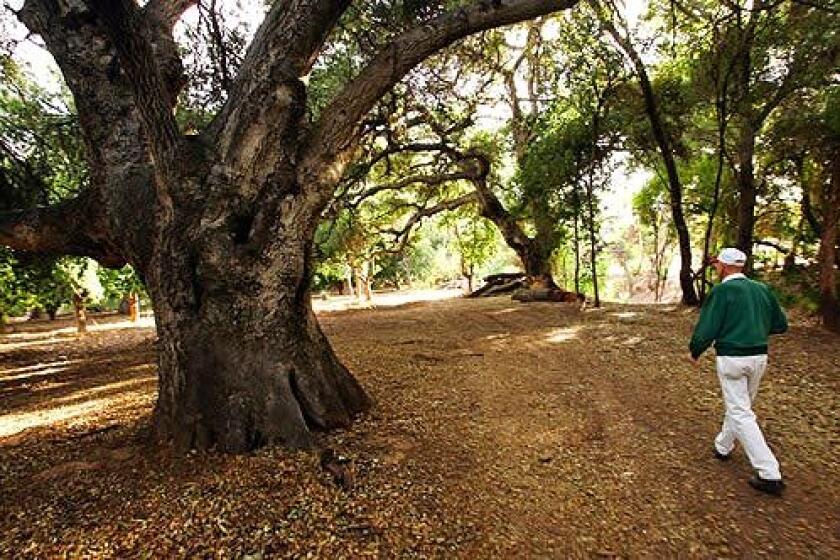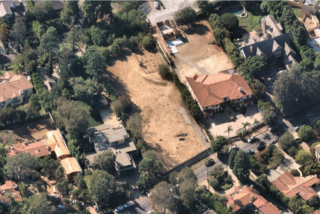How a descendant of loggers saved forests, inspired Richard Powers and Amy Adams
- Share via
On the Shelf
Finding the Mother Tree: Discovering the Wisdom of the Forest
By Suzanne Simard
Knopf: 368 pages, $29
If you buy books linked on our site, The Times may earn a commission from Bookshop.org, whose fees support independent bookstores.
The Pacific Coast of North America is a land of deep greens and blues, soft gray skies that bring drenching rain in the winters and dry ochre summers. It’s perfect weather for growing trees that rise to the height of 20- and 30-story buildings. But they are a vestige of what existed before Christopher Columbus set sail — before white settlers arrived and saw the giants as a source of wealth. Many of the forests, replanted by timber companies, have had much of their ecological diversity replaced with monocultures of Douglas fir. What gets lost when the original species vanish?
Suzanne Simard, a professor of forest ecology at the University of British Columbia, has been asking such questions since she was a teenager. Her new memoir, “Finding the Mother Tree,” weaves her family’s history among the trees with her own groundbreaking discoveries — the most revolutionary being that trees communicate with and nourish each other, such that every lost tree diminishes the super-organism that is a forest. This week, the book was acquired for a film adaptation, with Amy Adams set to play Simard.
Traditional forest policy relies on the notion that trees are forever in competition. In this worldview, trees fight tooth and nail (or root and branch) to draw sustenance from the soil, collect rain and access sunlight. If companies want the fastest-growing Douglas fir, competition must be eliminated. Diverse forests are clear-cut, herbicides employed to kill the undergrowth — ferns, berries, herbs — anything that could draw nutrients away from the cash crop. The value of the woods is reduced to the price commanded on the market.
What Simard discovered — and explains in accessible detail throughout her fascinating memoir — is that trees are not solo combatants; instead, trees are networked by the fungi that grow underground. This shroomy growth attaches to the roots of many trees, forming the nervous system of a sort of meta-organism — one that transmits messages and nutrients among trees of varying species. Via this network, trees can even act altruistically, giving up nutrients so others can survive. Simard’s work also shows that these relationships go both ways; a plant that sacrifices during one season may reap the benefits in the future. But the network weakens when one species dominates the forest.
Simard’s research culminated in the discovery of what she calls “Mother Trees.” These flourishing trees took on the role of nurturing new generations of seedlings. Simard sees them as providing “fluid intelligence” to younger trees, transmitting information about where to find water or how to avoid pests. Eliminating mother trees from forests throws the cooperative system into chaos, leaving the remaining trees vulnerable.
Obi Kaufmann’s ‘The Forests of California’ is the latest in a series that suggests we need to understand nature in order to save it.
Industry experts and forest scientists were not receptive to Simard’s theories. In fact, they treated her notion of a forest cooperative with scorn, rejecting her data as not applicable to the “real world.” Despite her evidence, which has been replicated and amplified by other scientists, critics remained committed to the idea that giant trees could only grow by eliminating competition.
Though the memoir never directly mentions gender, some of the reactions to her research felt sexist. I asked her about that when we spoke via video and she was circumspect. “You know, my colleagues in forestry, they still [ask me] ‘You don’t believe in that [crap], do you? This cooperative thing?’ It’s still very much an uphill battle.” Those colleagues are invested, she says, in “favoring these big, competitive individuals for profit.” Though the push-pull between competition and altruism is a common tension in evolutionary biology, her findings did not sit well with world views built on individual dominance.
Simard didn’t exactly grow up a tree-hugger. Her family has been harvesting trees in British Columbia for generations. As she admits in the memoir, she has cut down her own “fair share.” But early on, she started wondering why some patches of forest seemed to regrow rapidly while others struggled and died. “My queries started from a place of solemn concern for the future of our forests,” she writes, “but grew into an intense curiosity, one clue leading to another, about how the forest was more than just a collection of trees.”
Simard recounts the day when, at 20, she was riding her bike to a rodeo where her brother was competing. She stopped to forage mushrooms and made an accidental discovery when she pulled up a young tree. Its “roots were glowing yellow, like a Christmas tree, and they ended in a gossamer of mycelium of the same color. The threads of this streaming mycelium looked close to the same color as those radiating into the soil from the stems of the Suillus mushrooms … I studied them closely, but I could not tell them apart.” After more research, Simard began to understand that an entire unseen world of connections existed below the soil.
Her revelations came not a moment too soon. Forests are disappearing. Some of the last old growth is on Vancouver Island where activists are facing off against loggers targeting the ancient trees. Simard has seen devastating change just in her lifetime. “I grew up in a province of old-growth forest,” she says. “It’s a completely different place in 60 short years. We’ve taken everything. We’ve got 3% of our old-growth forest left.”
Blaine Harden grew up on the story of the “Whitman Massacre” as a foundation myth of the Pacific Northwest. In “Murder at the Mission,” he debunks it.
It would be a remarkable feat if Simard were known simply for her work on tree communication, but that’s just where her research starts. Along riverbanks, she has discovered salmon DNA inside the cores of nearby trees. And she has traced tree networks as vast as several hundred yards to a single “mother tree.”
To understand how important Simard’s research has been, it helps to think of her — as I do — as a sort of mother tree herself. The notion of interconnected trees was popularized by Richard Powers’ Pulitzer-prize winning, bestselling novel “The Overstory,” which features a character modeled on Simard. But others have also trod this ground: It was an interview with Obi Kaufmann that first caused me to think about the relationship between trees and salmon. The works of Leanne Betasamosake Simpson and Jacqueline Keeler emphasize the philosophies of land underlying Native American cultures. Simard’s research informs Powers and Kaufmann, and her work with First Nations peoples in British Columbia has informed her research in turn. Speaking with Simard felt like coming to the headwaters of a vast system of ideas, both innovative and ancient.
While much of Simard’s memoir concerns her research, there are also affecting personal stories involving her family, colleagues and partners. Whether recounting her close relationship with her bull-riding brother or the fieldwork she managed to do while holding her baby, the author emerges as a woman connected in multiple ways to her family, her community and her environment — from the giants of the forest to the tiniest of organisms.
Simard writes, for instance, of the thrill of watching an eagle catch an updraft. “There is no moment too small in the world. Nothing should be lost. Everything has a purpose, and everything is in need of care. This is my creed. Let us embrace it. We can watch it rise. Just like that, at any time — all the time — wealth and grace will soar.”
To read “Finding the Mother Tree” is to imagine the view from a 250-foot redwood. The recognition that we’re all connected is one of the great gifts of the memoir. From such a view, it’s possible to feel part of the whole — a feeling we’re only now starting to recognize as our natural state.
Berry writes for a number of publications and tweets @BerryFLW.
Books about nature to read while avoiding the coronavirus — from classics by John McPhee and Annie Dillard to the upcoming “Book of Eels.”
More to Read
Sign up for our Book Club newsletter
Get the latest news, events and more from the Los Angeles Times Book Club, and help us get L.A. reading and talking.
You may occasionally receive promotional content from the Los Angeles Times.









